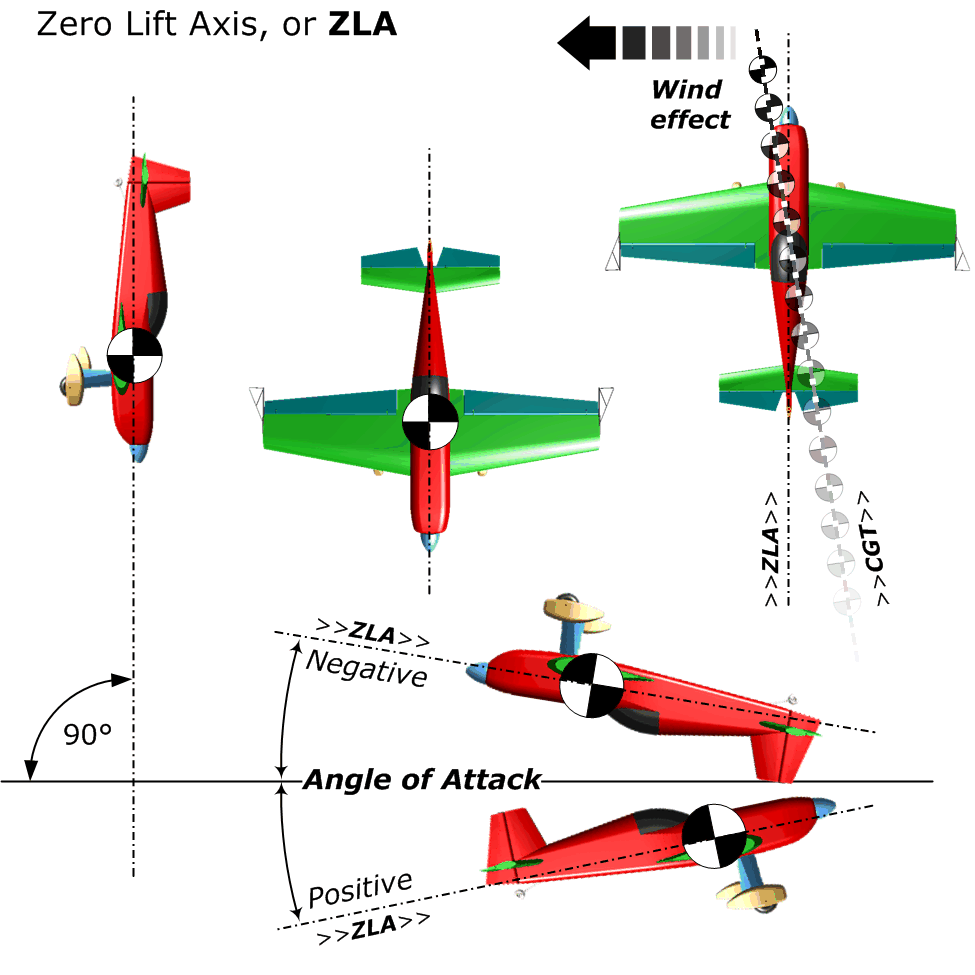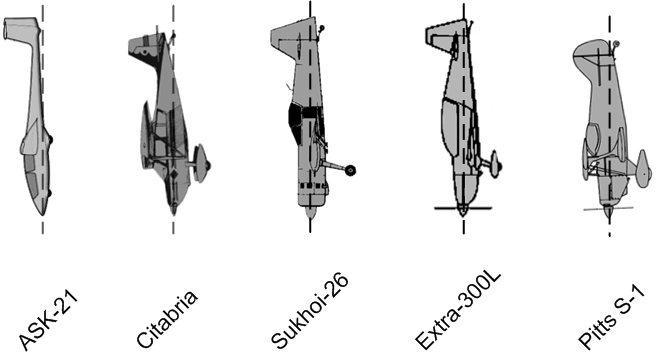The Zero Lift Axis (ZLA) - page 1
 The "Zero Lift Axis" of an aircraft is a function of its aerodynamics. Think of it as an imaginary line, but this time it is "fixed" to the aircraft and runs through the centre of gravity from nose to tail.
The "Zero Lift Axis" of an aircraft is a function of its aerodynamics. Think of it as an imaginary line, but this time it is "fixed" to the aircraft and runs through the centre of gravity from nose to tail.
Imagine that an aircraft is flying a true vertical line in still air, then the ZLA will be perpendicular to the ground.
The left sketch here shows the aeroplane flying vertically downwards with its ZLA at 90° to the horizontal.
Look at the two plan-view aeroplanes in the centre and the right, and clearly the yaw axis (and hence the ZLA) is vertical in both cases.
However in the one on the right the effect of the wind is to force the CGT to be at an angle to the vertical ZLA. Because of this a considerable sideways vector to the CGT is quite often seen. This is a key element in the art of keeping the aircraft in the box when it is windy.
Aeroplane silhouette
In different aeroplanes the Zero Lift Axis can be similar to or very different from the line along which the fuselage appears to point. Early aerobatic designs with an upswept floor line behind the pilot can seem very nose-forward when flying vertical lines (Tipsy Nipper, Stampe, Pitts etc.) and markedly nose-up when inverted, while more modern symmetrically shaped monoplanes (Extra 300, Cap 232, Sukhoi 26 etc.) have been designed to appear to fly with almost the same attitude both ways up.

The Schleicher ASK-21 glider in particular displays a marked 'nose-down' attitude that must be carefully considered on vertical lines. This 'phantom' error is most marked in a stall-turn, where the aeroplane can appear quite noticeably positive on the way up and equally negative on the way down even when it isn't - the bane of a Pitts driver's life.....

